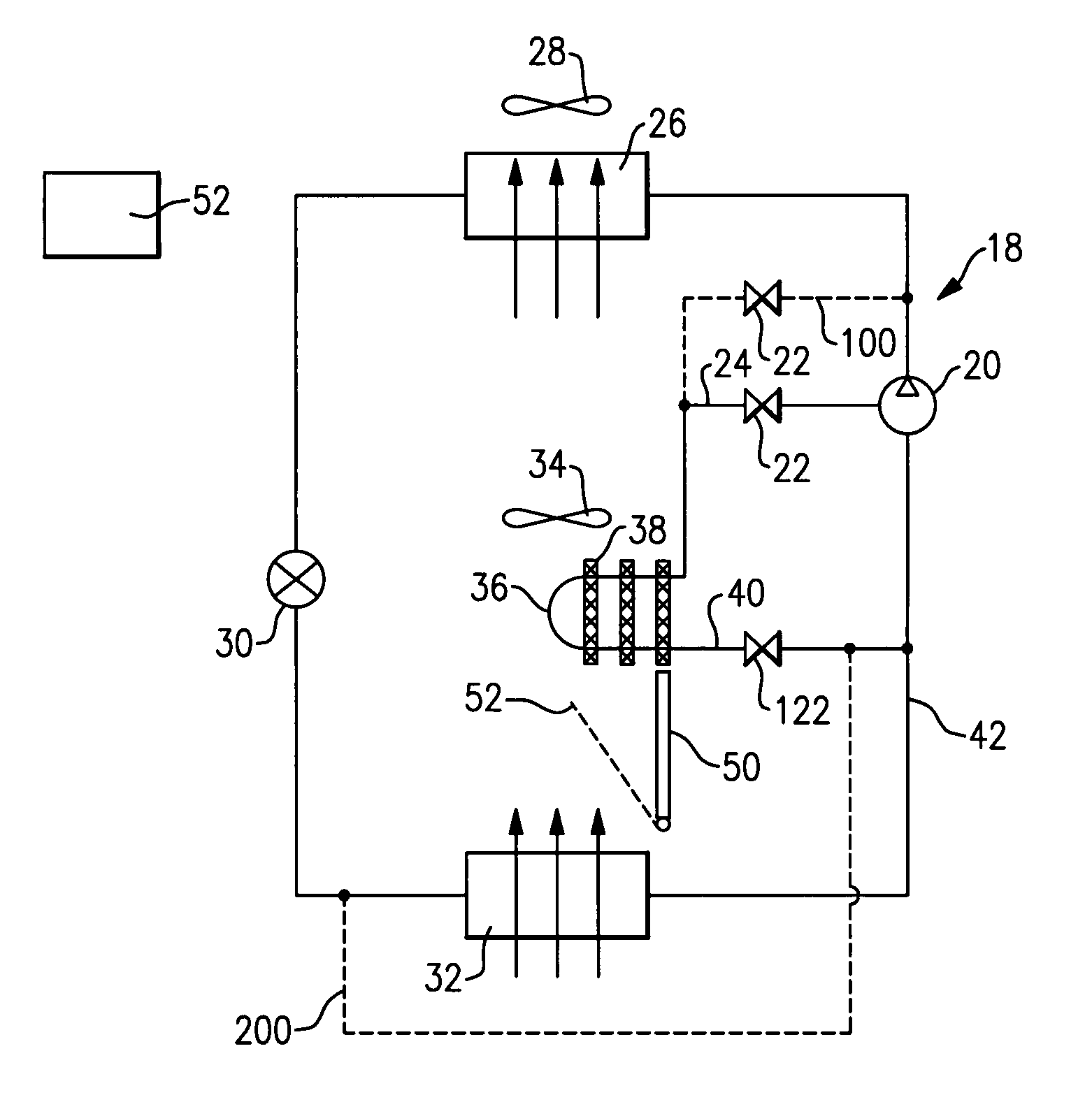Utilization of bypass refrigerant to provide reheat and dehumidification function in refrigerant system
a refrigerant system and bypass technology, applied in the field of refrigerant systems, can solve the problems of reducing the mass flow rate the compressor is capable of pumping through, negatively affecting the reliability of the refrigerant system, and affecting the performance of the compressor, so as to avoid the possibility of reliability problems associated with the overheating of the compressor and improve the compressor performan
- Summary
- Abstract
- Description
- Claims
- Application Information
AI Technical Summary
Benefits of technology
Problems solved by technology
Method used
Image
Examples
Embodiment Construction
[0013]A refrigerant cycle 18 includes a compressor 20 having a valve 22 for selectively bypassing a portion of compressed refrigerant into a bypass line 24 and then back to the compressor suction. The main flow of refrigerant that has been compressed by the compressor 20 moves downstream to a condenser 26. An air-moving device 28 moves air over the condenser 26 providing heat transfer interaction (heat rejection) between the refrigerant and air. Downstream of the condenser 26, the refrigerant enters an expansion device 30, and then an evaporator 32. An air-moving device 34 moves air over the evaporator 32 to be cooled and dehumidified, as known. The bypass line 24 has a section 36 placed in the path of this air stream flowing over the evaporator 32. As shown, extended heat transfer structure such as fins 38 may be added to the section 36 to increase its heat transfer capability. As generally known, when a desired dehumidification level is to be achieved, that would result in the air...
PUM
 Login to View More
Login to View More Abstract
Description
Claims
Application Information
 Login to View More
Login to View More - R&D
- Intellectual Property
- Life Sciences
- Materials
- Tech Scout
- Unparalleled Data Quality
- Higher Quality Content
- 60% Fewer Hallucinations
Browse by: Latest US Patents, China's latest patents, Technical Efficacy Thesaurus, Application Domain, Technology Topic, Popular Technical Reports.
© 2025 PatSnap. All rights reserved.Legal|Privacy policy|Modern Slavery Act Transparency Statement|Sitemap|About US| Contact US: help@patsnap.com


